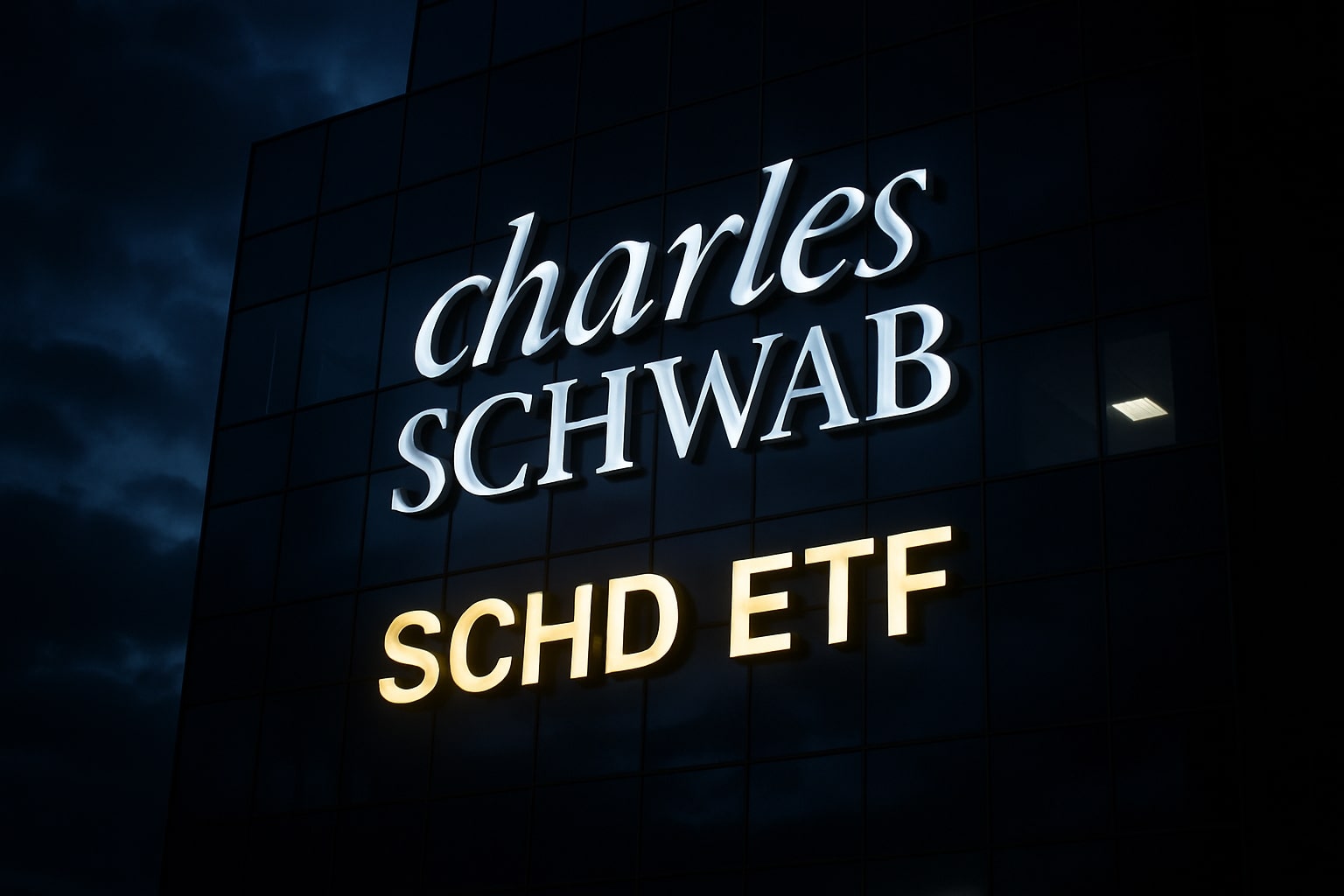
Is Vanguard High Dividend Yield ETF (NYSEARCA:VYM) the Right Investment for 2025?
With market volatility and escalating tariffs, is VYM's 3.15% dividend yield enough to protect against downside risks in the current environment? | That's TradingNEWS
Vanguard High Dividend Yield ETF (NYSEARCA: VYM): Resilient in Volatile Markets, But Facing Long-Term Risks
The Vanguard High Dividend Yield ETF (NYSEARCA: VYM) has shown remarkable resilience amid the broader market's volatility, making it a popular choice among income-focused investors. With a 3.15% dividend yield, VYM continues to provide investors with a steady income stream, supported by a portfolio of financially stable, large-cap companies that prioritize dividend payouts. In 2025, VYM has fallen by just -8.24%, outperforming the S&P 500, which dropped by -13.57%, and the Nasdaq's decline of -17.16%. This performance highlights VYM's ability to mitigate downside risk during market downturns. However, the fund faces challenges ahead, particularly in terms of long-term capital appreciation and the opportunity cost compared to other growth-oriented ETFs.
VYM's Balanced Portfolio: Defensive in Volatile Markets, But Limited Growth Potential
VYM's investment strategy is designed to provide stability and income. Unlike growth-focused ETFs like the SPDR S&P 500 ETF Trust (SPY), which has a higher allocation to technology stocks (30.52% of its portfolio), VYM maintains a more conservative approach. Technology stocks make up just 13.06% of VYM’s holdings, which helps shield it from the extreme volatility that often affects tech stocks during market sell-offs. This portfolio composition positions VYM as a more defensive option, particularly in periods of market uncertainty.
The ETF focuses on large-cap companies that generate significant free cash flow (FCF) and are known for paying stable or growing dividends. For example, it holds top dividend-payers like Exxon Mobil (XOM) and Broadcom (AVGO). These companies continue to generate cash flow even during economic downturns, ensuring the ETF's dividend payments remain stable. Over the past 14 years, VYM has consistently increased its dividend, with a 1.67% average growth rate over the last five years. Currently, the fund pays a dividend of $3.69 per share, with a yield of 3.15%.
Despite these strong fundamentals, VYM's growth potential is limited compared to other ETFs, such as the Vanguard Dividend Appreciation ETF (VIG), which focuses on companies that have a strong track record of increasing their dividends. VYM's strategy of investing in large-cap, stable companies positions it well in volatile markets, but it may underperform in periods of market recovery when growth stocks lead the way. For example, VYM's performance in past downturns has been solid, but its historical returns have not been as high as other dividend-focused ETFs with a stronger emphasis on growth.
Risks and Challenges for VYM: Opportunity Cost and Slow Dividend Growth
While VYM has delivered solid performance during market downturns, it faces significant risks in terms of opportunity cost. Over the long term, the ETF has underperformed the broader market, particularly during periods of economic recovery. VYM’s focus on high dividend yield rather than growth limits its potential for capital appreciation, making it a less attractive option for investors seeking growth. The ETF’s dividend income alone may not be sufficient to compensate for its slower growth, especially when compared to other dividend-focused ETFs like VIG, which has demonstrated stronger dividend growth and capital appreciation over time.
For instance, over the past decade, VYM's compound annual growth rate (CAGR) has been 10.78%, while VIG's CAGR has outpaced it at 12.48%. The difference in performance, which translates to nearly $4,000 more profit from a $10,000 investment in VIG compared to VYM, illustrates the opportunity cost of investing in VYM for growth-focused investors. Although VYM’s higher yield can provide income stability, its limited growth potential may not be enough to offset the lower returns when compared to more growth-oriented funds.
VYM's Dividend Strategy: A Safe Haven for Income-Focused Investors
One of VYM’s main selling points is its focus on providing reliable dividend income. During market downturns, dividend-paying stocks tend to be less volatile and provide a sense of security to investors. As the market fluctuates, many income investors turn to dividends as a source of stability. While others experience portfolio declines, VYM's consistent dividend payments offer a cushion for investors looking for steady cash flow. The fact that VYM has increased its dividend consistently for 14 years speaks to the reliability of its income stream.
Furthermore, VYM’s holdings are concentrated in sectors such as energy, healthcare, and consumer staples—industries known for their ability to generate cash flow even in uncertain economic environments. As a result, VYM's dividend income provides a level of safety for investors seeking a stable source of income, regardless of market conditions. This is especially appealing as concerns over potential recession grow, given the escalating tariffs and geopolitical risks. Investors looking for a more defensive ETF amid economic uncertainty may find VYM to be an attractive option due to its strong dividend yield and focus on large, financially stable companies.
The Impact of Tariffs: Potential for Market Volatility and Recession
The ongoing trade tensions and tariff disputes are adding to the market’s volatility, and the potential for a recession is becoming increasingly likely. As the U.S. continues to impose tariffs on key trading partners, companies in sectors like technology, energy, and consumer goods may face higher costs and decreased profitability. For VYM, which has significant exposure to energy companies like Exxon Mobil, the impact of tariffs could affect its ability to maintain strong cash flow and dividend payouts. Additionally, tariffs may exacerbate inflationary pressures, further dampening economic growth.
Despite these challenges, VYM's defensive nature positions it to weather the storm better than more growth-oriented ETFs. The ETF’s focus on stable, large-cap companies provides a buffer against the volatility created by tariffs and trade tensions. However, the potential for a slowdown in earnings growth and rising input costs could limit the upside potential of VYM’s holdings. As such, investors should be cautious about relying solely on VYM for capital appreciation in the face of ongoing market turbulence.
VYM's Long-Term Outlook: Dividend Growth vs. Capital Appreciation
VYM’s long-term outlook hinges on its ability to continue providing reliable dividend income while managing risks associated with market downturns. While the ETF's 3.15% dividend yield is attractive in the current low-interest-rate environment, its limited growth potential may make it less appealing for investors seeking capital appreciation. VYM’s historical performance suggests that it may underperform the broader market during periods of growth, as its focus on dividend yield limits its exposure to high-growth sectors like technology.
However, for income-focused investors looking for stability and consistent cash flow, VYM offers a strong value proposition. The ETF’s portfolio of large-cap, financially stable companies provides a solid foundation for long-term dividend growth, and its conservative approach makes it a safer bet during volatile market conditions. Investors should be aware, though, that VYM's lower growth potential compared to other dividend-focused ETFs like VIG may result in opportunity cost over time.
VYM vs. VIG: Comparing Dividend Growth and Performance
When comparing VYM to other dividend-focused ETFs like VIG, it becomes clear that VYM’s primary advantage lies in its higher dividend yield. However, VIG’s emphasis on dividend growth and capital appreciation has historically resulted in better long-term performance. VIG's 5-year dividend growth rate of 11.08% far outpaces VYM's 1.67% growth, and VIG’s focus on companies with strong growth potential has led to higher returns over time.
In terms of downside protection, VYM has shown resilience in market downturns, but its focus on dividend yield may not provide enough growth to compete with VIG during periods of market recovery. VYM’s higher yield may be appealing for income-focused investors, but those seeking a balanced portfolio with growth potential should consider VIG's superior performance and dividend growth.
Final Thoughts on VYM: A Strong Income Play, But Limited Growth
VYM remains a solid choice for income-focused investors seeking a reliable dividend yield in volatile markets. The ETF’s emphasis on large-cap, financially stable companies with strong free cash flow provides a strong foundation for dividend payments, making it a safe haven during market downturns. However, VYM’s limited growth potential compared to more growth-oriented dividend ETFs like VIG means it may underperform during periods of market recovery. As such, while VYM offers stability and income, investors should be aware of the opportunity cost and consider whether the ETF aligns with their long-term investment goals.
Given its resilience during downturns and steady dividend payouts, VYM is a solid choice for conservative, income-focused investors. However, those seeking a more balanced portfolio with higher growth potential should look to other options like VIG, which offers both strong dividend growth and capital appreciation.
That's TradingNEWS
Read More
-
SCHD ETF (NYSEARCA:SCHD) Climbs To $27.25 As Investors Flock To Dividend Stability Over Tech Volatility
12.11.2025 · TradingNEWS ArchiveStocks
-
XRPI and XRPR Jump as First U.S. XRP ETF Nears Launch With XRPC Set for Nasdaq Listing
12.11.2025 · TradingNEWS ArchiveCrypto
-
Natural Gas Price (NG=F) Steadies at $4.53 as Record LNG Exports and Rising Winter Demand Boost Market Confidence
12.11.2025 · TradingNEWS ArchiveCommodities
-
USD/JPY Price Forecast - USDJPY=X Holds At ¥154.10 As Intervention Threats And Fed Cut Expectations Drive Volatility
12.11.2025 · TradingNEWS ArchiveForex


















